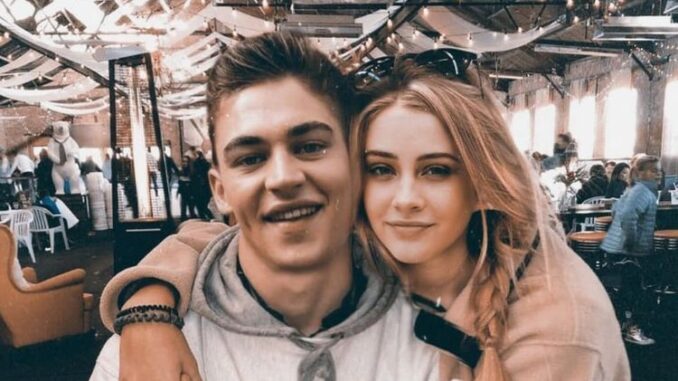
Love stories rarely follow a straight line. Especially not the kind between Tessa Young and Hardin Scott.
When After We Fell premiered, many fans expected more of the same: passion, intensity, longing glances, and inevitable makeups after heated breakups. But what they got was something deeper. Darker. More adult. This wasn’t just a continuation—it was a turning point.
In the third installment of the After series, Tessa and Hardin are no longer just college kids figuring out love. They’re two people battling the consequences of the love they’ve built—and the trauma they’ve never addressed. The film opens with a looming decision: Tessa is offered her dream job in Seattle, but Hardin wants to stay in London. It’s the classic tug-of-war. Career versus relationship. Freedom versus comfort. Self-growth versus codependency.
And this time, there’s no easy compromise.
What sets After We Fell apart is its emotional honesty. It doesn’t shy away from showing the cracks in Tessa and Hardin’s relationship. The miscommunications aren’t cute. The arguments aren’t cinematic—they’re messy, raw, and too real. Watching them, many fans found themselves asking a terrifying question: What if love isn’t enough?
For all their chemistry—and yes, the chemistry is still electric—Tessa and Hardin begin to question whether they’re actually good for each other. Hardin’s anger issues flare up. His jealousy spirals. Tessa begins to pull away—not because she doesn’t love him, but because she finally starts to love herself more.
That shift is what makes After We Fell so impactful.
Tessa isn’t the same naïve girl from the first film. She’s grown. She’s working, thinking independently, seeing the flaws in the man she once idolized. Hardin, meanwhile, is unraveling. As secrets from his past come to light—including one devastating revelation about his parents—he begins to spiral, unsure of who he is without Tessa beside him.
This is not a love story where kisses fix everything. It’s a love story that asks: Can two people truly heal together, or do they first need to heal alone?
Visually, the film leans into its more mature tone. Gone are the pastel dorm rooms and sunlit college quads. In their place are dimly lit hotel rooms, rainy streets, and long, uncomfortable silences. The cinematography reflects the characters’ inner turmoil. Even their moments of intimacy—while steamy—carry an emotional weight that wasn’t there before.
Critics may dismiss After We Fell as teen melodrama. But fans know better. This chapter hurts because it’s honest. It mirrors real-life relationships—where timing is wrong, wounds run deep, and love isn’t always a safe place.
And yet, it’s precisely that realism that makes the story so addictive.
Because we’ve all been Tessa at some point—torn between the heart and the future. We’ve all been Hardin—afraid to be vulnerable, terrified of losing the one person who ever stayed.
